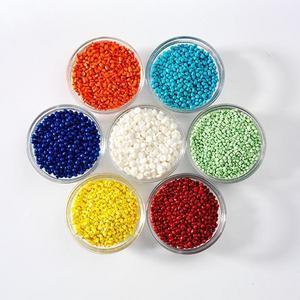Metabolix Q2 results focus on future commercial development




Metabolix Inc.
August 13, 2015
BY Katie Fletcher
On Aug. 12, Metabolix Inc. released its second quarter financial results, emphasizing its focus on commercial development and biopolymer production with its pivot to a new business strategy focused on specialties.
Joseph Shaulson, company president and CEO, began the call recapping three key phases: technology, initial commercialization and pivot to specialties phases. “We have pivoted to a new business strategy focused on specialties, where we are leveraging our core bioscience together with the wealth of experience gained in earlier phases to develop unique differentiated PHAs that have the potential to unlock commercial opportunities in specialty applications like PVC (polyvinyl chloride) and PLA (polylactic acid) additives, functional biodegradation and barrier coatings for paper.”
Shaulson stated on the call that during the company’s initial commercialization phase, Metabolix established a joint venture with ADM to manufacture and sell its early PHA products as biobased, biodegradable replacements for conventional plastics. “This was a commodity approach and we faced challenges with that strategy and it ultimately failed,” he said.
Even so, Shaulson said the company accomplished the successful scale up of PHA manufacturing and gained important knowledge about their polymer products and technology.
For the second quarter, Metabolix reported a net loss from continuing operations of $6.1 million, or 26 cents per share, as compared to a net loss from continuing operations of $6.8 million for the comparable period in the prior year. Total revenue from continuing operations in quarter two was $700,000 unchanged from the second quarter of 2014. The quarter’s revenue primarily consisted of revenue from government grants, with $100,000 in product revenue recognized during the second quarter of this year compared to $200,000 in quarter two of the prior year.
Advertisement
Advertisement
Research and development (R&D) expenses for continuing operations were $4.3 million and selling, general and administrative (SG&A) expenses amounted to $2.5 million for the second quarter. This compares to $4.4 million of R&D expenses and $2.7 million of SG&A expenses for the second quarter of 2014.
The company reported net cash used in operating activities for continuing operations during the second quarter of $5.5 million, up from $4.9 million for the second quarter of 2014.
For the first half of 2015, Metabolix reported a net loss from continuing operations of $11.9 million, or 52 cents per share, compared with a net loss of $14.3 million for the first half of 2014.
Metabolix highlighted several areas of progress since its quarter one earnings report. In June, the company raised $15 million in a private placement of equity securities. Metabolix also regained compliance with the NASDAQ capital market listing requirements in June.
Advertisement
Advertisement
As for its biopolymer production capacity, the company has been implementing a plan to significantly increase its pilot production capacity for Mirel PHA biopolymers. Capital upgrades in the pilot biopolymer recovery facility are now complete. Metabolix is also on track to ramp up amorphous-PHA production to support its commercial activities. “We have now completed the capital expansion of our pilot recovery facility for Mirel PHA biopolymers and have resumed biopolymer recovery operations with fermentation broth produced earlier this year,” Shaulson said. “In the third quarter, we expect to begin ramping production to our new nameplate capacity with fermentation broth from our new larger-scale U.S. supplier. We will focus our current production resources on our new amorphous-PHA to serve our ongoing commercial development activities as well as initial customer conversions. Separately, we are working on manufacturing options for commercial-scale biopolymer production.”
In its first quarter financial results, Metabolix reported a solid portfolio of commercial activity. Shaulson stated during the quarter two earnings call that the company is starting to gain visibility on initial customer convergence and is happy to report that the company has begun initial commercial sales to a few customers in the first half of 2015. “While these customers will buy modest amounts of material to start, there were opportunities for these applications to grow and we also have made progress with some larger-scale applications that are moving closer to commercialization,” Shaulson said. “We view the commercial progress in the first half of 2015 as an important milestone for us, which I attribute to the change in our business and culture as we complete the pivot to specialties.”
Related Stories
The U.S. Department of Energy Bioenergy Technologies Office (BETO) announced up to $23 million in funding to support research and development (R&D) of domestic chemicals and fuels from biomass and waste resources.
The U.S. DOE has announced its intent to issue funding to support high-impact research and development (R&D) projects in two priority areas: sustainable propane and renewable chemicals and algal system cultivation and preprocessing.
Sens. Sherrod Brown, D-Ohio, and Pete Ricketts, R-Neb., in August introduced the Renewable Chemicals Act, a bill that aims to create a tax credit to support the production of biobased chemicals.
The Chemical Catalysis for Bioenergy Consortium, a consortium of the U.S. DOE’s Bioenergy Technologies Office, has launched an effort that aims to gather community input on the development of new biomass processing facilities.
USDA on March 8 celebrated the second annual National Biobased Products Day, a celebration to raise public awareness of biobased products, their benefits and their contributions to the U.S. economy and rural communities.
Upcoming Events










